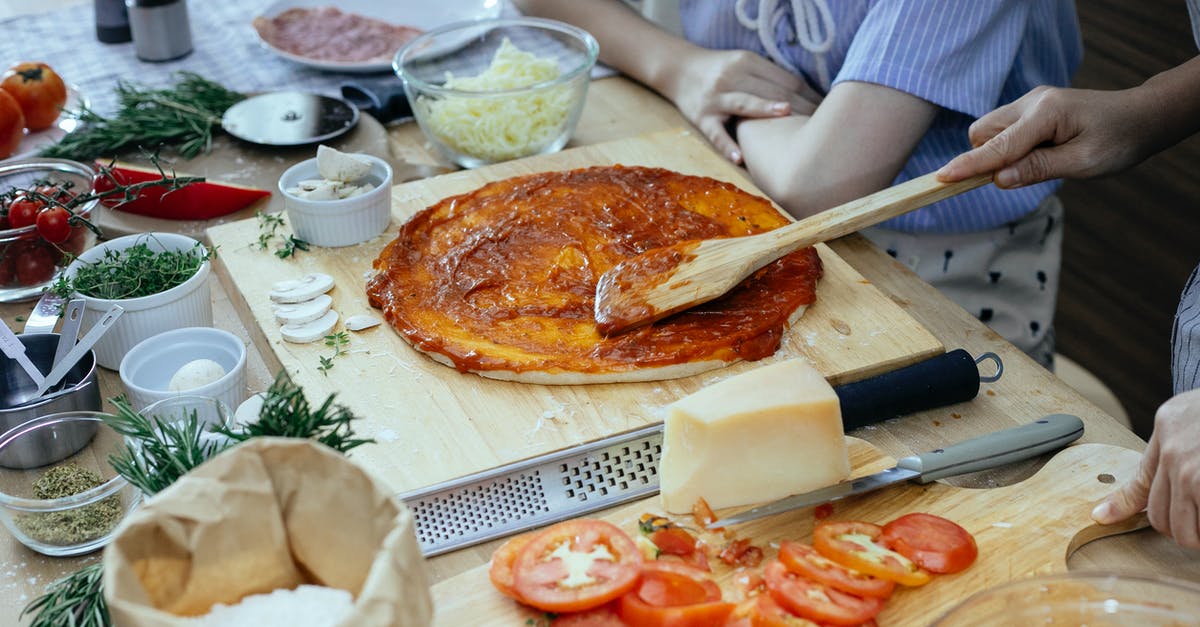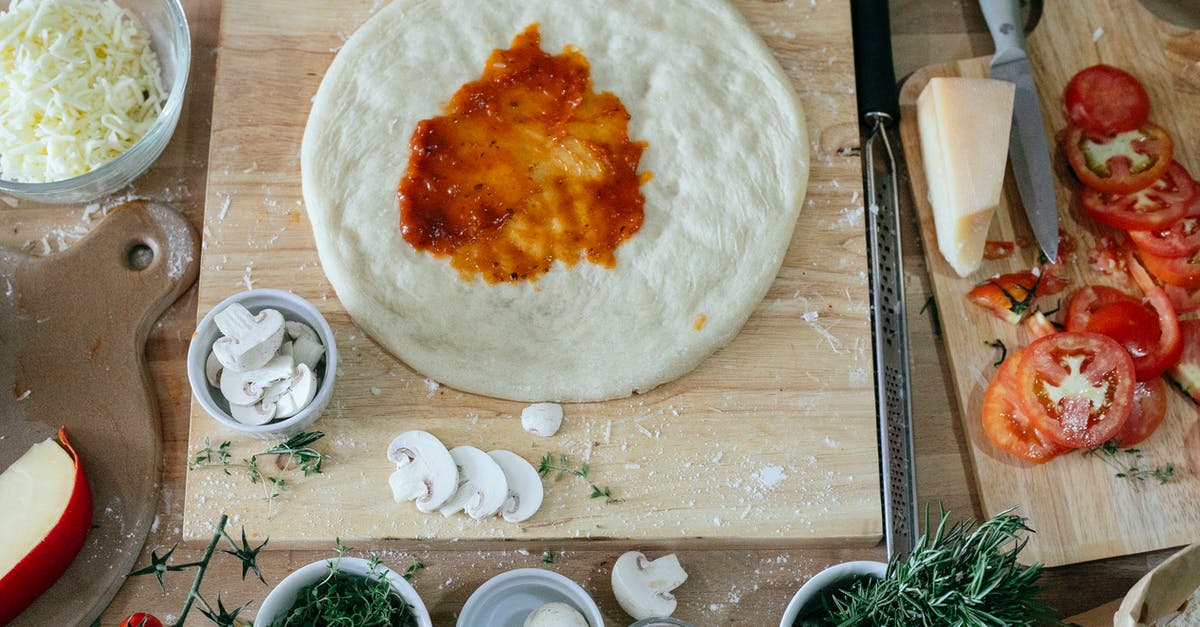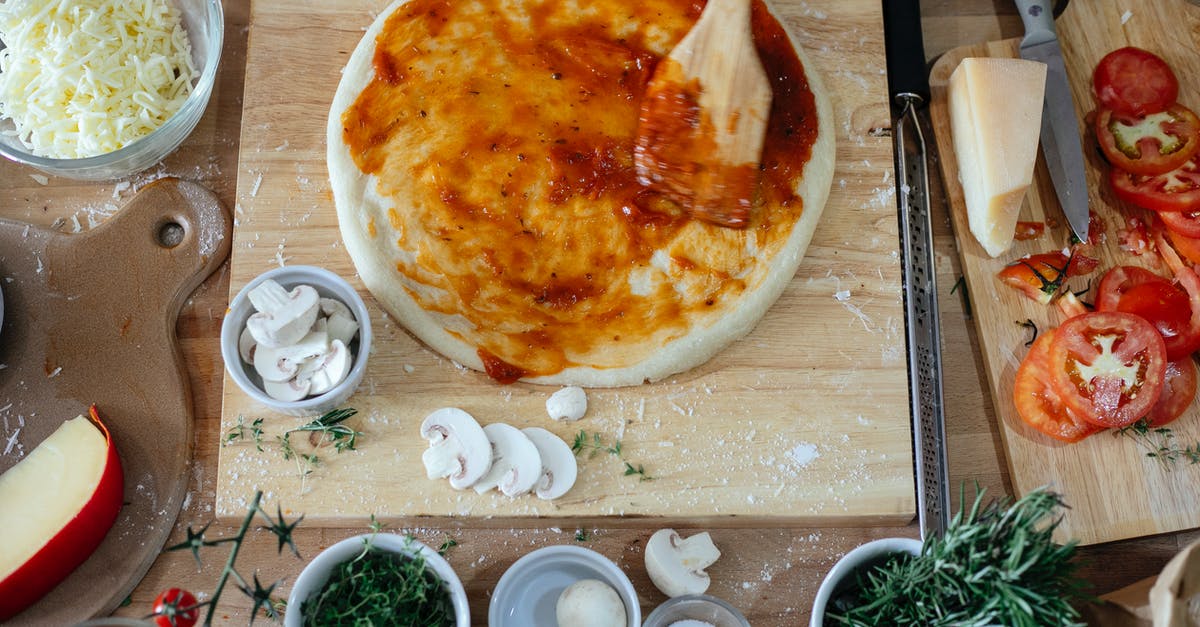How can I reheat a roux-based (alfredo) sauce in the microwave without separation?

I made an alfredo sauce last night using a roux made with ghee instead of regular butter, since that's what I had on hand. The ingredients were: ghee, flour, heavy cream, garlic, pecorino romano, and salt and pepper to taste.
The sauce turned out great, I was able to get the consistency to exactly how I wanted it.
When I went to reheat it in the microwave at work today for lunch, the sauce separated terribly, essentially leaving a pool of butter in the bottom of the bowl. It tasted ok, but it definitely felt like I was eating spoonfuls of butter at times. If it matters, the sauce and pasta were combined before microwaving, I didn't reheat the sauce by itself.
Is there a trick to reheating a homemade alfredo/béchamel sauce that will keep it from separating in the microwave? As suggested in this thread, could I add an emulsifier that will help the next day, but won't negatively affect the taste or consistency of the dish when it's still fresh?
Note: I posted this as a separate question from the one I reference above because this is specifically about separation during reheating, not storage, which might have different answers (such as lower temp or less time).
Best Answer
Sunflower lecithin (sorry, best link I could find) is gaining in popularity as an alternative to soy lecithin because it is widely perceived to have a neutral taste and actually has superior emulsifying properties. It's a little on the expensive side, though.
Soy lecithin by itself doesn't taste horrible if you buy it as a food additive (as opposed to a nutritional supplement). It's common to find in a lot of popular frozen pasta-and-sauce dishes, such as Michelina's, which obviously must be microwaveable without the sauce curdling or separating.
Another option is Sodium Stearoyl Lactylate, if you can get hold of it. This one adds a little sweetness which is generally pleasant-tasting, or at least inoffensive. You'll find it used most often as a dough conditioner or in baked goods, but another popular use for it is in commercial sauces, although unfortunately I can't find specific examples right now.
But probably the best emulsifier for what you're trying to do here is xanthan gum. It's also used as a gelling agent, but in small quantities works as just an emulsifier. You can find it, for example, in this Bertolli Creamy Alfredo Pasta Sauce - exactly the sort of thing you're making. It's also used in the Stouffer's Alfredo sauce.
Mix in a little lecithin or xanthan gum as an emulsifier while the sauce is fresh or cooking and it's very unlikely that your sauce will separate, either in the fridge or in the microwave.
As for what you can do to specifically prevent separation while reheating, if you didn't add any emulsifiers in the first place... I really don't think there's anything you can do. If you're a slow enough eater the sauce will eventually separate right in front of you; that's just what happens when you have water and fat in the same sauce. Best to reheat on the stove top in that case, and stir frequently to prevent any further separation.
Pictures about "How can I reheat a roux-based (alfredo) sauce in the microwave without separation?"



How do you heat up Alfredo sauce without separating it?
How to Reheat Alfredo Sauce without SeparationHow do you microwave Alfredo without it separating?
Transfer a single portion of alfredo sauce and place it in a microwave-safe bowl. Add a tablespoon of milk or water in the bowl and mix it well to prevent from the sauce separating. What is this? Cover the bowl with plastic wrap or wet paper towel and microwave on the reheat setting or 50% power level for 30 seconds.How do you microwave cream sauce without breaking it?
Reheating heavy cream sauce in the microwave oven is never advisable. Direct heat will cause the sauce to break, separating oil from rest of the ingredients. However, reheating is not entirely impossible. Heat it slowly, preferably in a hot water bath to prevent this issue of breaking and separating into oils.Can you reheat roux sauce?
If you're a slow enough eater the sauce will eventually separate right in front of you; that's just what happens when you have water and fat in the same sauce. Best to reheat on the stove top in that case, and stir frequently to prevent any further separation.How do you keep Alfredo sauce from separating when reheating?
More answers regarding how can I reheat a roux-based (alfredo) sauce in the microwave without separation?
Answer 2
I think mfg is close, but the issue isn't time -- it's temperature.
Don't microwave at full power; I tend to go with 30-50% power for anything milk based, depending if you know you have a microwave that tends to be slower/faster than the recommended cook times on things.
And of course, check on it, possibly stir once it once or twice during re-heating so you don't develop hot spots. Yes, it'll take longer, but some things take time to keep from ruining.
And, like mfg mentioned, don't try to get it too hot ... or you could end up with the same results again.
Answer 3
The longer it is in the microwave the more the oil will separate. I guess the only recommendation is to nuke it to the minimum tolerable temperature. Try covering with a ceramic bowl or other insulator (phsycist?); I think it may do well to trap steam and add a second heating mechanic.
Answer 4
I love the commercials for emulsifiers as an accepted answer... no one has answered this question! Also many people have issues with lechitins and additives, but that is for another thread.
You have a microwave and let's say a bowl of Alfredo sauce with a flour thickened roux, your microwave cannot perform at 10% power it just runs at 100% power 10% of the time, you can hear it turning on and off if you don't believe me, I am sure there is an advanced microwave out there but this answer should be for an average one.
First, do not but the alfredo sauce in the microwave, instead, take a microwave-safe-container and heat enough water to immerse the non-insulated-container with the alfredo sauce, the water only needs to simmer/roll before being removed. You can now gently breakup and stir your sauce directly in the immersed bowl, reheat the water only to add more heat. The gradual process will not cook and split your roux/cream/milk, which is the issue with many reheats. If you can continue to keep your pasta separated from your sauce life is easier and you can reheat the pasta in the microwave covered with a ~tablespoon of water depending on the amount of pasta.
Sources: Stack Exchange - This article follows the attribution requirements of Stack Exchange and is licensed under CC BY-SA 3.0.
Images: Polina Tankilevitch, Katerina Holmes, Katerina Holmes, Katerina Holmes
